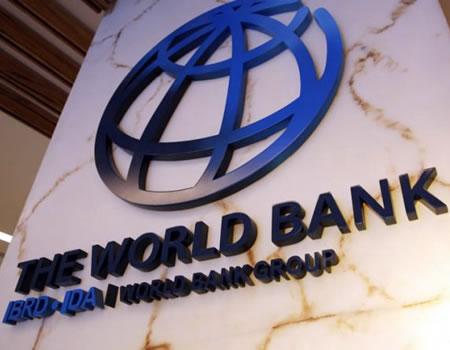The World Bank has forecasted a significant decline in global oil prices, projecting that Brent crude could drop to $73 per barrel by 2025 due to an anticipated oversupply. The latest “World Bank 2024 Commodity Markets Outlook,” published last weekend, attributes the expected price decrease to an oversupply driven by factors such as steady oil production and softened demand growth.
According to the report, Brent oil prices are expected to average $80 per barrel in 2024, gradually declining to $73 by 2025 and reaching $72 in 2026. This forecast assumes stable market conditions with no prolonged disruptions due to conflicts, a deceleration in demand growth, and continued high production levels.
The projected surplus in the oil market stems from significant changes in demand, particularly from China. The report notes that China’s oil demand has plateaued since 2023, influenced by a downturn in industrial activity and an increase in the use of alternative energy sources such as electric vehicles and LNG-powered trucks.
Impact of Non-OPEC Production
Additional oil production from non-OPEC countries is expected to contribute to this oversupply. Several nations outside the OPEC and OPEC+ alliance, including the United States, Brazil, Canada, and Guyana, are anticipated to increase production levels in the coming years. In 2024 and 2025, the United States alone is expected to add around 0.6 million barrels per day (mb/d) to global supply.
The World Bank report also indicates that production from other countries, including Kazakhstan, Norway, and several African nations, will further support this increase. In contrast, OPEC+ members are anticipated to keep production levels relatively steady, extending most of their existing voluntary cuts.
Potential Price Spike if Middle East Tensions Escalate
While the World Bank’s base scenario points to a steady price decrease, it also outlines the impact of potential geopolitical disruptions. If the ongoing conflict in the Middle East intensifies, reducing global oil output by 2% or about 2 million barrels per day, Brent prices could temporarily surge to $92 per barrel. However, the World Bank believes any price spike would be short-lived, as unaffected oil producers could ramp up production to stabilize the market. In this scenario, oil prices would likely average around $84 per barrel in 2025.
Broader Economic Implications
In addition to oil, the report forecasts a general decline in global commodity prices, with drops of approximately 5% in 2025 and 2% in 2026. Indermit Gill, the World Bank Group’s Chief Economist, suggests that these lower prices, combined with stable supply, could help cushion the impact of potential geopolitical shocks. However, he noted that falling commodity prices might have limited effect on high food prices, particularly in developing nations where food inflation remains high.
World Bank Deputy Chief Economist Ayhan Kose added that declining oil prices present an opportunity for policymakers, especially in developing economies. As lower commodity prices ease inflationary pressures, governments may have a window to reduce expensive fossil-fuel subsidies, enhancing fiscal stability and redirecting resources toward essential social and economic initiatives.
The report concludes that although oil demand is still rising, the rate of growth is projected to slow. Global consumption is expected to increase by 0.9 mb/d in 2024 and 2025, a considerable decline from the 2 mb/d growth seen in 2023 following the end of China’s pandemic-related restrictions.










